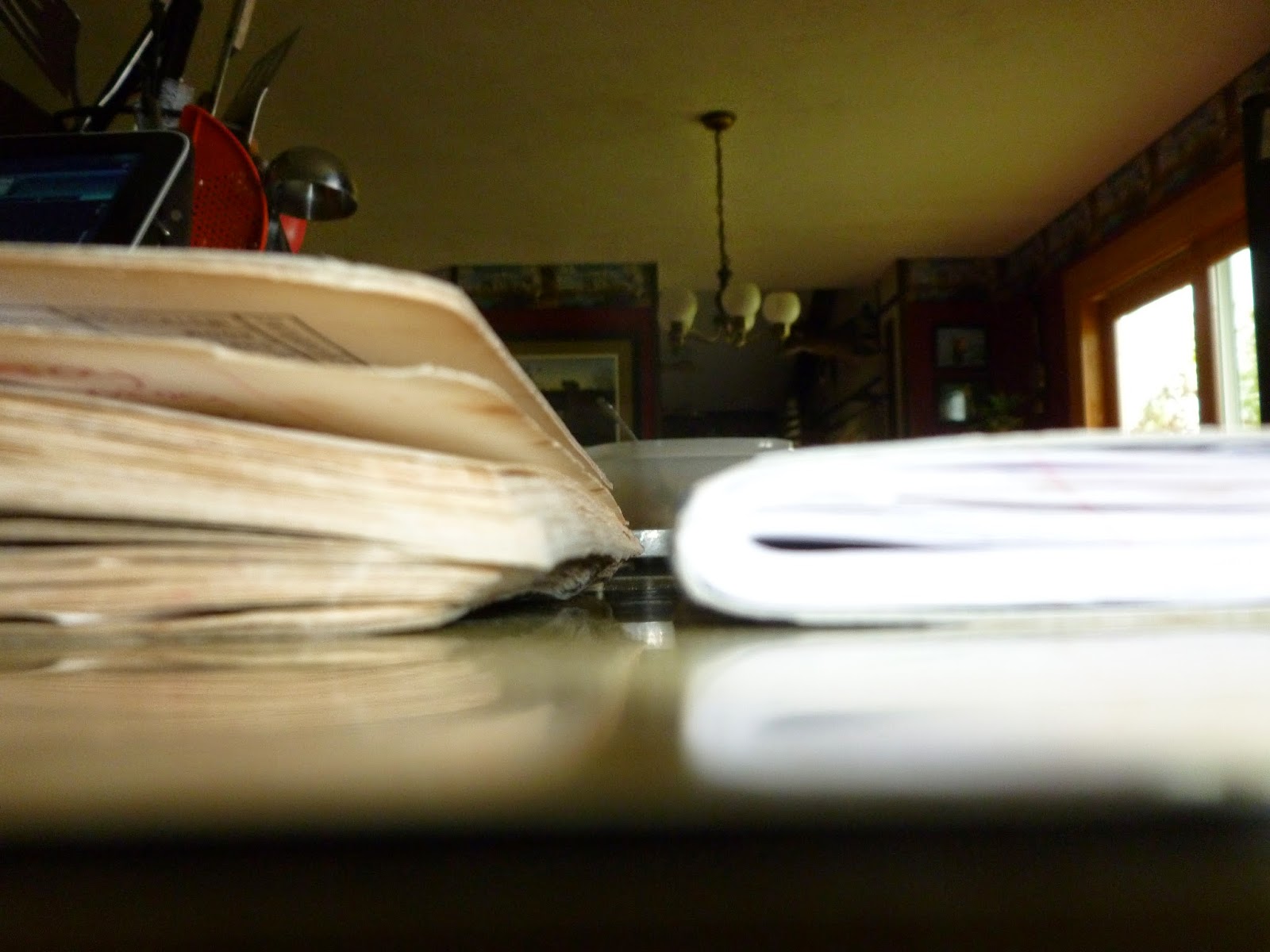Happy Birthday
to Me!
I had really wanted to get the challenge done as soon as possible after
my last (first) post, but you know how time slips by and all of a sudden my
mother was asking me what I wanted for my birthday dessert. What better
opportunity than today to make up the pie and have my birthday dessert and the
first challenge of the HFF all in one?
I got my five d’Anjou
pears pared (haha), sliced, and chored. Generally the pears are left whole and
simply pared and chored with the stems cut off so that they can stand up in the
coffin (pie crust) but I’m making a slight change. Since my main era of
historic cooking is the mid-19th century, we’ll just say that the
recipe has been adapted for modern times. The recipe also calls for the
pears to be poached in a white wine, sugar, and water liquid, but since this is
only my nineteenth birthday and not
my twenty-first, I had to make do with
regular old water and sugar.
 |
| Poaching the pears in Sugar-Water. |
As the pears
were poaching, I preheated the oven and got to work on my pie crust. When the
recipe was originally written, pie crusts or coffins as they were called, were
much more of a cooking vessel than a part of the dish. Oftentimes they were
elaborately decorated, as we eat with our eyes as much as our mouths,
regardless of era. Most of the time when I do a standing crust pie like this
one, I go with the recipe for pie crust that James Townsend gives in his blog Savoring the Past. However, this crust is the harsh epitome of a coffin. It’s not
particularly flavorful, it’s a huge amount of flour, and it’s much better
suited to savory pies when it is going to be eaten as part of the dish. So, my
pie crust is the no-fail pie crust that I copied into my trusty Mead
Composition from my mother’s trusty Mead Composition.
 |
| That big fat one on the left is hers, I haven't been collecting favorite recipes as long as she has! |
The pie crust
recipe makes 4 9-inch crusts, or enough for two regular two-crust pies. Standing crusts
are like the deep dish pizza of the pie world, except that since my form for
molding them is a spring-form cake pan, I think my pies are more deep-dish than
even the deepest deep-dish you could find in Chicago. Normally I would halve
the recipe, but for this special occasion, and to follow along with history as
much as I can aside from my alterations, I wanted to add some pretty decoration
to the crust. Cue my historic culinary hero, Ivan Day. On his blog Food History Jottings he notes some decorative pie tops found in a really, really old Austrian
cookbook, namely the popular lattice pattern we're familiar with today. My pie top isn't nearly as
impressive as some of these (another day I’ll make even more crust and really
deck out a pie). It’s
a really simple diamond shaped lattice, done by two’s and alternating sides
instead of weaving them. The effect (were my attempt not so clumsy) is that it
creates an illusion of depth. Then, because I don’t know when to stop when I’m
ahead, I added on my initial, L, in the middle.
I think I poured
too much of the poaching liquid in because it came out of the crust as soon as
I cut into it, even after it had baked the full time, still, it came out
beautifully and tasted delicious, similar to a mild apple pie. We ate about
half of it, just the four of us (mom, stepdad, mom’s friend, and I).
The Date/Year
and Region: 1623, England
How did you make
it?: I followed the recipe (with a very few alterations) mentioned in my last post. The alterations that I made were: a different pie crust than would have
likely been used in the 17th century, no wine in the poaching
liquid, sliced pears rather than whole, powdered spices rather than whole.
Time to
Complete: Oh goodness, I forgot to time it! Well, it took maybe about two hours
from prep-work to baking.
Total Cost: I
purchased the pears but everything else we had on hand, so $4.99 (5 d’Anjou
pears from Wegman’s Supermarket)
How Successful
Was It?: I’d say about an 8 out of 10. I didn't have quite enough crust to do
the decorative top that I wanted to, there was too much poaching fluid that didn't cook out, and it made the bottom crust a little soggy.
How Accurate is
It?: For 1623, probably only moderately, due to the alterations that I made and
the fact that pears aren't actually in season for my area right now.
I'm so excited for the next challenge!



No comments:
Post a Comment